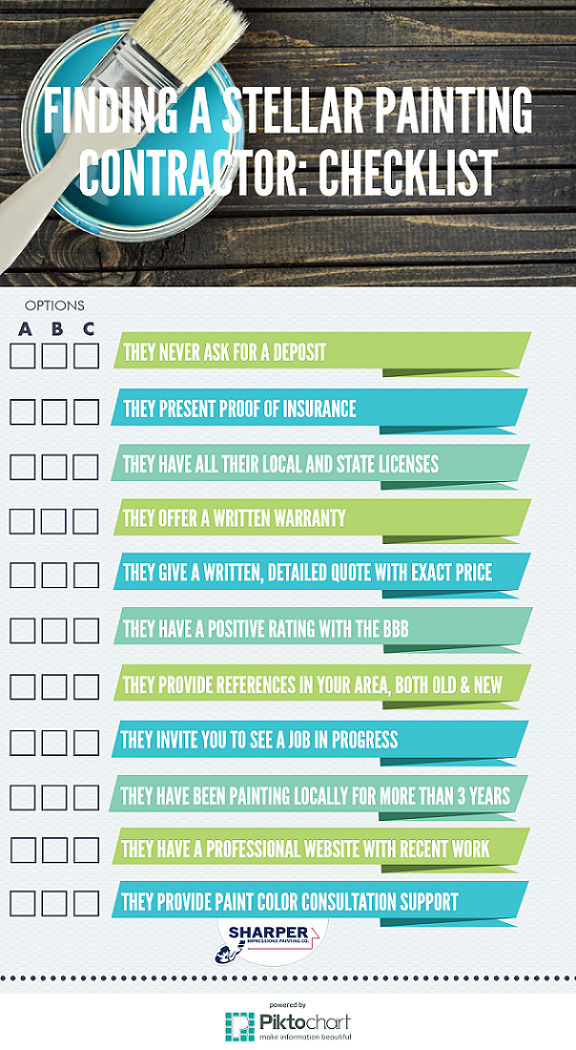The Effect Of Weather Condition On Your Industrial Outside Paint Project Is Profound-- Explore Just How It Can Either Improve Or Weaken Your Outcomes
The Effect Of Weather Condition On Your Industrial Outside Paint Project Is Profound-- Explore Just How It Can Either Improve Or Weaken Your Outcomes
Blog Article
Created By- commercial painting portland maine
When you're intending a commercial external paint job, don't ignore the effect of climate on your results. You require to consider elements like temperature, humidity, and precipitation, as they can make or break your paint work. For example, did you know that suitable problems require particular temperature ranges and moisture levels? Stopping working to keep an eye on these elements can lead to unequal surfaces and even damages to fresh paint. Understanding these aspects is crucial to attaining a durable, professional result. So, what specific weather conditions should you be wary of?
Temperature Considerations
When it comes to industrial exterior paint, temperature plays an essential function in the outcome of your task. If you're painting in extreme heat, the paint can dry out as well promptly, causing problems like poor attachment and uneven surfaces. You want to aim for temperatures in between 50 ° F and 85 ° F for the very best outcomes. Below 50 ° F, paint may not treat appropriately, while above 85 ° F, you run the risk of blistering and splitting.
Timing your project with the appropriate temperatures is crucial. Beginning your work early in the morning or later in the afternoon when it's cooler, particularly during warm months.
Likewise, consider the surface temperature; it can be substantially more than the air temperature level, especially on warm days. Utilize a surface thermostat to inspect this prior to you start.
If temperature levels are unforeseeable, watch on the weather report. Abrupt temperature declines or heat waves can hinder your plans. You don't wish to begin repainting only to have the conditions transform mid-project.
Moisture Degrees
Humidity levels considerably affect the success of your commercial external painting job. When the moisture is expensive, it can hinder paint drying and healing, resulting in a series of problems like poor adhesion and complete quality.
If you're planning a work during damp problems, you could find that the paint takes longer to completely dry, which can expand your project timeline and boost costs.
Alternatively, low humidity can also posture challenges. Paint may dry out as well swiftly, avoiding correct application and resulting in an irregular surface.
You'll want to keep an eye on the humidity levels closely to ensure you're working within the ideal variety, typically in between 40% and 70%.
To obtain the most effective outcomes, think about utilizing a hygrometer to gauge humidity prior to beginning your job.
If you locate the levels are outside the ideal variety, you might require to adjust your routine or pick paints created for variable conditions.
Constantly get in touch with the producer's guidelines for certain referrals on humidity tolerance.
Rainfall Effect
Rainfall or snow can considerably disrupt your industrial exterior paint strategies. When rainfall occurs, it can get rid of freshly used paint or produce an irregular surface. Preferably, you wish to select days with completely dry climate to ensure the paint adheres appropriately and treatments successfully. If you're caught in a shower, it's best to halt the job and await problems to boost.
Furthermore, snow can be a lot more harmful. discover this info here does it create a wet surface, but it can likewise reduce temperature levels, making it difficult for paint to dry. This can lead to concerns like peeling or blistering down the line.
It's important to check the weather report before starting your job. If rainfall or snow is predicted, consider rescheduling.
Always remember to allow adequate drying out time between coats, particularly if the weather remains unforeseeable.
Final thought
To conclude, watching on the climate is vital for a successful industrial exterior painting job. By keeping an eye on temperature level, humidity, and rainfall, you can guarantee the best conditions for application and curing. Remember to plan your job around favorable weather condition and always adhere to maker guidelines. With the right technique, you'll accomplish a resilient, stunning coating that can stand up to the elements. Don't allow the weather catch you off-guard-- remain notified and paint wise!
